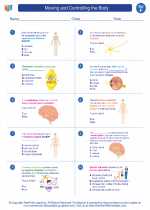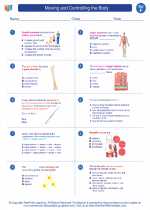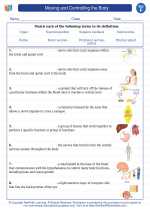Organ Systems
Organ systems are groups of organs that work together to perform specific functions in the body. There are 11 major organ systems in the human body, each with its own unique set of functions and structures.
1. Circulatory System
The circulatory system is responsible for transporting oxygen, nutrients, and hormones to cells throughout the body and removing waste products. It consists of the heart, blood vessels, and blood.
2. Respiratory System
The respiratory system is involved in the exchange of oxygen and carbon dioxide between the body and the environment. It includes the nose, trachea, lungs, and diaphragm.
3. Digestive System
The digestive system processes food and absorbs nutrients. It includes the mouth, esophagus, stomach, intestines, liver, and pancreas.
4. Nervous System
The nervous system coordinates the body's activities by transmitting signals to and from different parts of the body. It includes the brain, spinal cord, and nerves.
5. Muscular System
The muscular system enables movement and helps maintain posture. It includes skeletal muscles, smooth muscles, and cardiac muscles.
6. Skeletal System
The skeletal system provides structural support and protection for the body's internal organs. It consists of bones, cartilage, and ligaments.
7. Integumentary System
The integumentary system serves as a barrier against infection, injury, and UV radiation. It includes the skin, hair, and nails.
8. Endocrine System
The endocrine system regulates bodily functions through the production and release of hormones. It includes glands such as the pituitary gland, thyroid gland, and adrenal glands.
9. Immune System
The immune system defends the body against infections and diseases. It includes white blood cells, lymph nodes, and the spleen.
10. Urinary System
The urinary system eliminates waste products from the body and regulates fluid balance. It includes the kidneys, ureters, bladder, and urethra.
11. Reproductive System
The reproductive system enables the production of offspring. It includes the male and female reproductive organs.
Study Guide
- What are organ systems?
- List and describe the functions of the 11 major organ systems in the human body.
- How does the circulatory system function?
- Explain the role of the nervous system in the body.
- Discuss the functions of the muscular system.
- What are the components of the skeletal system?
- Describe the role of the integumentary system.
- How does the endocrine system regulate bodily functions?
- What is the function of the immune system?
- Explain the role of the urinary system in maintaining fluid balance.
- Discuss the reproductive system and its role in the production of offspring.
Understanding the organ systems of the human body is essential for comprehending how the body functions as a whole. Studying these systems in detail will provide a solid foundation for understanding human anatomy and physiology.
[Organ Systems] Related Worksheets and Study Guides:
.◂Science Worksheets and Study Guides Sixth Grade. Moving and Controlling the Body

 Worksheet/Answer key
Worksheet/Answer key
 Worksheet/Answer key
Worksheet/Answer key
 Vocabulary/Answer key
Vocabulary/Answer key
 Vocabulary/Answer key
Vocabulary/Answer key
 Vocabulary/Answer key
Vocabulary/Answer key
